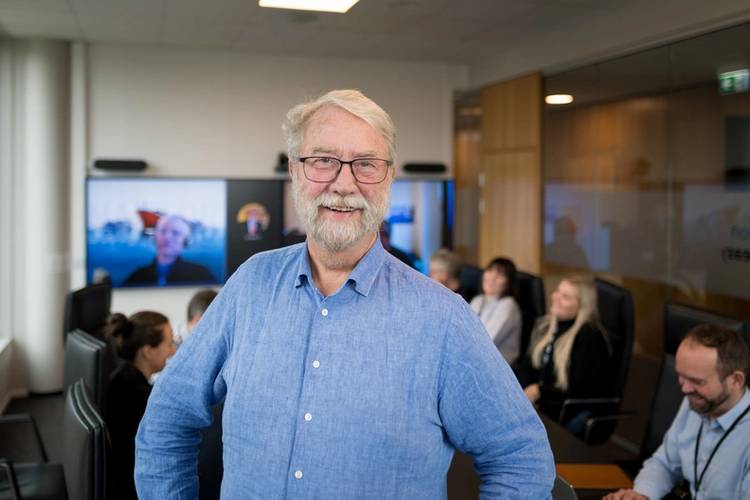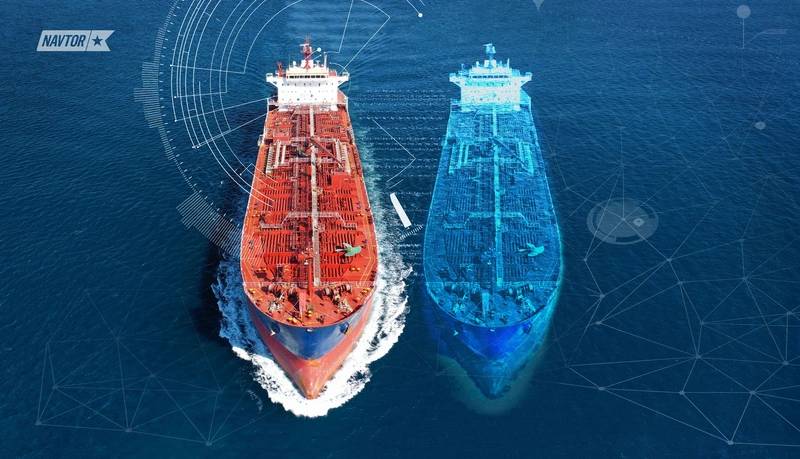Leadership Profile: Tor Svanes and NAVTOR's Quest to Transform Shipping
Compliance, performance, profitability, sustainability; take the biggest ‘pain points’ for almost any shipping company and watch NAVTOR’s digital ecosystem work wonders. Here Tor Svanes, Founder and CEO, explains how NAVTOR has grown to lead the smart shipping world, why the recent merger with Voyager Worldwide was so critical, and how he hopes to help steer the industry towards brighter, simpler, and more intelligent horizons.
“The morning of the announcement I got a text from the boss of one of our biggest competitors, basically saying ‘blimey, I didn’t see that coming!’”
And to be fair, he wasn’t alone.
When Voyager Worldwide, a group with over 200 employees and a history stretching back over two centuries, became a NAVTOR company in December last year it took the maritime world by surprise. It was a deal that made NAVTOR - founded in 2011 with, pre-merger, around 180 employees - the undisputed global leader in e-Navigation, smart shipping, and the maritime technology domain.
Although already renowned as a major player, and arguably the driving force in digital innovation within its niche, the deal catapulted the Norwegian headquartered business into a different league.
An observation that has Tor Svanes, Founder and CEO of NAVTOR, nodding in agreement.
“Just a few years ago if you had a company like ours with products and services on 4, 5 or 6,000 vessels it’d be huge,” Svanes notes, “but this takes us to over 18,000. That’s more than 30% of all the ships relevant to our services in the world fleet. The opportunity that scale unlocks, for both ourselves and our customers, is immense, and that was the motivation here.
“So, this doesn’t mark the culmination of our efforts, or the end of our voyage. We see this as just the beginning.”
Unlocking Opportunity
It’s clear that after well over 40 years in the maritime technology field (he started with Robertson, then owned by Kongsberg, in 1980) Svanes ambitions have anything but diminished. He has helped position NAVTOR firmly facing the future, with a clear vision of ‘leading the way in smart shipping innovation’. The Voyager deal, he says, is central to that aim.
“We’re delighted with the way NAVTOR has grown, launching industry firsts such as Pay As You Sail ENCs and NavStation, the first maritime digital chart table, along the way,” Svanes said. “As we’d built a secure digital ecosystem to unite the e-Navigation portfolio onboard, while connecting vessels to onshore teams, it made perfect sense to take the next step, moving into smart shipping with performance monitoring, management and optimisation, and then digital logbooks.
“By integrating everything onto the NAVTOR platform we found we could really unlock the power of data: automating processes, enhancing safety, improving efficiency and delivering both commercial and environmental benefits to shipping companies worldwide.
“But then, as you progress, barriers emerge… and you need to find ways to address them.”
In NAVTOR’s case those barriers appear to have been the extra ‘muscle’ needed to achieve the team’s ambitions.
Bulking up
To really ‘lead the way’, helping to enable a more efficient, sustainable and profitable industry, the company found itself hungering for an influx of both customers and resources, in particular human resources.
“Talented developers are hard to come by,” Svanes admits, “and, in a niche defined by digital solutions, absolutely essential for progress. With Voyager Worldwide we saw a pool of very talented people, with 30 developers in their Aberdeen office alone, that could accelerate our innovation. That was a major incentive.
“In addition, the customer base obviously adds the volume we were looking for, while the network of offices boosts our global footprint, getting us as close to the customers as we need to be, on the scale needed to deliver first class service. For example, the deal pushed NAVTOR numbers in Singapore from seven to 75 people. In that respect, our business has been transformed.”
Svanes now wants to do the same for the businesses of NAVTOR customers. And integration is the key.
 “We’re delighted with the way NAVTOR has grown, launching industry firsts such as Pay As You Sail ENCs and NavStation, the first maritime digital chart table, along the way,” said Tor Svanes, Founder and CEO, NAVTOR.
“We’re delighted with the way NAVTOR has grown, launching industry firsts such as Pay As You Sail ENCs and NavStation, the first maritime digital chart table, along the way,” said Tor Svanes, Founder and CEO, NAVTOR.
Stronger Together
From the cornerstone of e-Navigation NAVTOR has built up a range of products and services that co-exist in the aforementioned digital ecosystem. Here they share, and feed one another with, a constant flow of data, with each individual solution working to unlock value that is then fed back into the joined-up system.
It creates almost a ‘society’ of mutually supportive solutions, each one working away for the greater good of all. Or for ‘all’ read the shipping company, which can suddenly simplify compliance, reduce energy consumption, slash administration duties, optimise and prove performance, enhance safety, control costs, and so much more. And this is achieved not just for single vessels, but for entire fleets and (now) united on- and offshore teams.
To list the benefits of each individual offering would take too long – from the ease of automated Passage Planning on NavStation, through to the CII simplifying Emissions Calculator on fleet management tool NavFleet – but Svanes points out NAVTOR’s Digital Logbooks as a case study in transformation.
Book to the Future
For anyone from outside the industry, he notes, it’d be “a complete shock” to discover the analogue nature of vessel logbooks in a digital age.
“These are very important data sources,” Svanes explains, “covering a range of critical issues, but they exist in isolation as out-dated, offline publications, often with scribbled entries from under pressure officers that can be difficult to decipher. As such, they’re time-consuming and impractical, a major source of human error, offer no real standardisation, little chance for verification or validation, and have to be shared via photocopying, scanning and faxing.
“It’s hard to believe they still play such a major role in daily operations for an advanced worldwide fleet.”
NAVTOR’s approach is to fire the format into the future with digital logbooks that are connected via the ecosystem, gathering all the data – much of which has been auto populated from the team’s integrated solutions – so shipping companies have a new, and powerful, big data resource to delve into.
“It simplifies tasks for the crew,” Svanes notes, “while opening immense possibilities for real-time data monitoring, efficiency, and continually enhanced sustainability for shipping companies.” Although he admits there’s no mandated regulations for digital logbooks yet he believes it’s “only a matter of time.”
“And, with all the benefits, why would you wait for a mandate?” Svanes questions, adding; “Here at NAVTOR we see this as a major area of growth going forwards. Something that our traditional customers, and all the new customers we’ve welcomed through Voyager, can really take advantage of.”
Dynamic Dreams
A return to that issue of scale takes the conversation back to how NAVTOR can really ‘lead the way’ for smarter shipping throughout the whole industry. And here, again, Svanes’ ambitions burn brighter than ever.
NAVTOR has recently set sail with a three-year project christened GASS (Green AI for Sustainable Shipping), working as lead partner with Grieg Star, Maritime CleanTech, Scandinavian Reach Technologies, Simula Research Laboratory, SinOceanic Shipping, and Sustainable Energy/SIVA, with support from the Norwegian Research Council, Innovation Norway, and SIVA.
In short, this aims to enable “data driven decarbonization” by creating AI empowered digital twins of vessels based on precise operational and environmental data. These will then be used to demonstrate a benchmark of real-time optimal fuel consumption. If the actual vessel – and that’s any vessel, anywhere, sailing in any conditions – falls short of that standard the data can be instantly analysed to find out why, leading to corrective, on the spot decision making.
“The eventual aim is to create a module that can then be integrated into our portfolio that will allow for dynamic voyage optimisation,” Svanes said. “That means both crews and onshore teams can address issues and deviations from plans as they actually happen. Our models show that can make a major impact on vessel energy consumption.”
Exactly how major?
“Well, energy savings, and therefore reduced emissions, of around 20%.”
Global Gains
In an industry of declining margins, and ever greater environmental concerns, it’s a huge number. And that’s just the beginning.
Because that’s 20% per vessel, but, if the machine learning module is integrated across NAVTOR’s entire customer fleet, you can multiply that effect by over 18,000.
And this, it seems, is where the benefit of the merger really hits home.
If the over 30% of vessels in the world fleet have their emissions slashed by 20% that means a cut of over 5% in the overall emissions of the entire shipping industry. That is colossal.
“We can do this,” Svanes says with complete confidence, “and this is just one project.
“It embodies what NAVTOR does, it embodies what smart shipping can achieve, and embodies how, through the integration of solutions and utilisation of data, we can help the industry sail towards a more sustainable future. But this is just another beginning. I’m looking forward to the voyage continuing!”
And no one, including the bosses of any competitors out there, will be surprised to hear that.
 Image courtesy Navtor
Image courtesy Navtor














